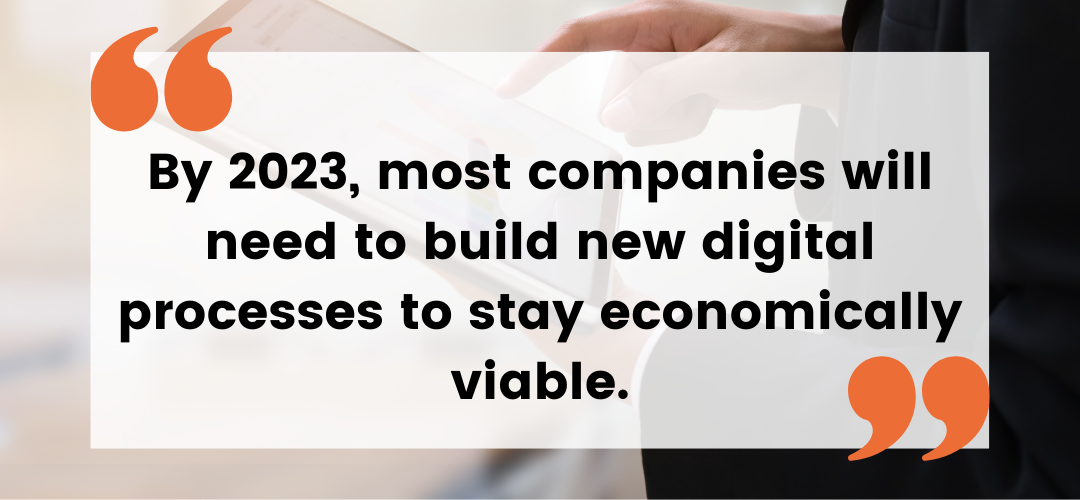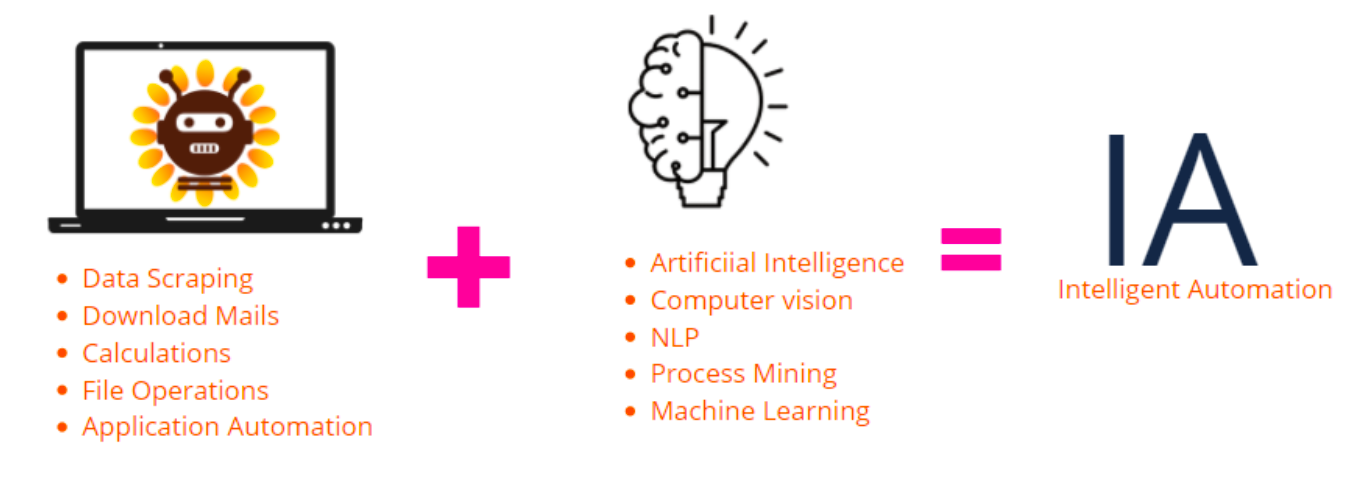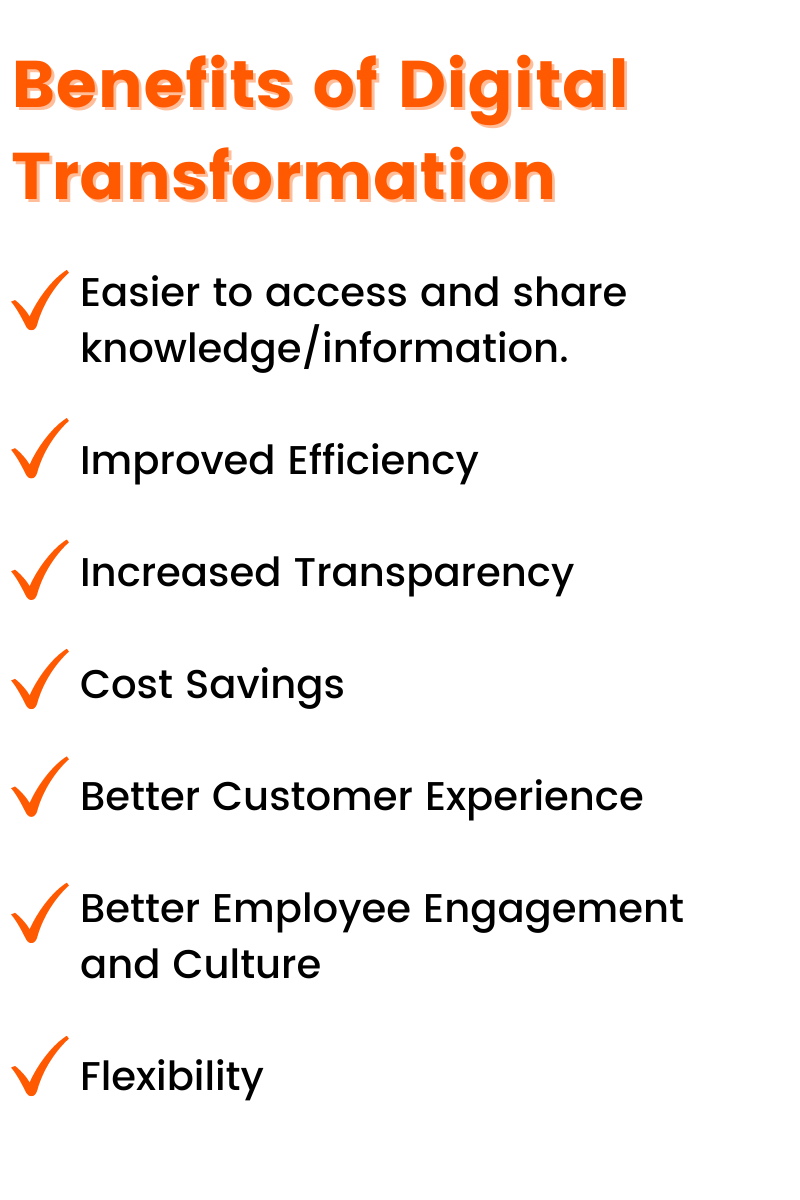Digital Transformation Strategy for 2022
Having a digital transformation strategy in 2022 will be critical for you to stay ahead of your competition. Why? Because digital transformation is more than a fancy term, it’s the future of business. Developing a digital transformation strategy not only means introducing business process automation into your organization, but also getting buy-in from your employees. Digital transformation strategies give us an opportunity to reimagine the way we do our jobs and engage with customers; sticking with sticky notes and handwritten ledgers is not going to cut it anymore. Now that we’ve piqued your interest, let’s start unpacking why having a game plan for digital transformation is so important and how you can develop one of your own.
What is Digital Transformation?
In simple terms, digital transformation refers to integrating digital technologies in areas of businesses to improve the business outcomes. Digital transformation is a movement to modify existing business processes to meet the needs to today’s digital age. And while technology is a critical component of a digital transformation strategy, it is going to be people that drive the initiative. Digital transformation is directly influenced by the people adopting it, not the technology. A successful digital transformation strategy requires human employees to be willing to learn, change, and grow out of their comfort zone. The end objective of digital transformation is to improve the processes, culture, customer experience by delivering at a much faster pace and at a higher quality while simultaneously adding value to the roles of your employees.
Why Having a Digital Transformation Strategy is Important
Overhauling practices, technology, and even your workplace culture is a heavy lift, so why would you do it? Excellent question. Besides the fact that McKinsey estimates by 2023, most companies will need to build new digital processes to stay economically viable, there are several motivating factors behind the decision to formulate a digital transformation strategy:
• It helps businesses not only survive but thrive in the future’s digital environment
• It helps an organization keep up with emerging customer demands
• It allows companies to stay ahead of competition
• It improves customer experiences
• It improves employee experiences
• It helps increase productivity at a lower cost

First Step of Digital Transformation Strategy
For any enterprise, digital transformation starts from a simple automation. That is why robotic process automation is the obvious first step in developing a digital transformation strategy. RPA software bots are onboarded to “learn” and then take over the mundane and repetitive tasks carried out by humans. In turn, this frees up the humans to perform more high-value duties. The implementation of RPA not only improves the customer experience, but also helps to transform the business by streamlining and refining the business processes.

Businesses are able to realize the benefits very quickly. The return on Investment (ROI for RPA) are very fast as compared to the other technology programs. This simple automation acts as the cornerstone for a wider digital transformation strategy. The next steps are then to integrate with other digital technologies such as machine learning, artificial intelligence, and/or chatbots with the goal of adopting an end-to-end digital transformation strategy.
How to Continue your Digital Transformation Journey
Robotic process automation is the first step in achieving digital transformation because it is a simple automation that can be implemented easily and return positive results quickly. But the digital transformation journey doesn’t end there. In order to extend the horizons of the automation, more digital transformation technologies need to be incorporated. Intelligent process automation, or intelligent automation, or IA exists to accelerate the technology transformation journey. Intelligent automation is the combination of RPA with advanced technologies such as artificial intelligence (AI), optical character recognition (OCR), cognitive technologies, computer vision, etc. With the help of intelligent automations and use of analytics, we can have solutions with automated decisions providing more flexibility to the end-to-end automation.

What Drives Digital Transformation?
Technology is the vehicle to get your digital transformation strategy from the starting line to the finish tape, but who is in the driver’s seat? Your customers and your employees, of course!
Customer: Keeping the customer at the center of your digital transformation strategy is your key to success. Improving relations with your customer is one of the main reasons why leaders decide to implement digital transformation. Therefore, continually auditing your digital transformation roadmap to ensure it is benefiting the customer is crucial.
Employee: Like we mentioned above, your employees are going to be the ones to get your digital transformation strategy off the ground. So, it’s important to provide incentives for them to oblige. Will business process automation take away boring, repetitive tasks they normal handle every day? Have you allotted room in your plan for employees to offer their suggestions for improvement? Keeping your employees involved and incentivized will make for a higher adoption rate for your digital transformation strategy.
Benefits of Digital Transformation
Now that you know what digital transformation is, why it’s important, and how you can start developing your strategy, let’s talk about how you stand to benefit:
Easier to access and share knowledge/information.
Digital transformation creates a system for gathering the right data and putting it in the right places for better organization and faster access.
Improved Efficiency
A good digital transformation strategy can improve communication, increase workflow, and seamlessly move the business forward: how efficient!
Increased Transparency
Implementing automation can illuminate aspects of the company that weren’t getting the attention they deserve. It also improves transparency by documenting each step of a workflow step by step.
Cost Savings
Three words: return on investment. See ROI for RPA for more information.
Better Customer Experience
With work getting done faster and better than ever before, the customer service experience will be positively affected.
Better Employee Engagement and Culture
Digital transformation automation presents an opportunity for employees to unload their boring, rule-based tasks to explore work opportunities that make them feel more fulfilled.
Flexibility
Digital transformation, specifically intelligent automation, enables businesses to respond to the changing market with ease (see Improve Customer Satisfaction with RPA and Sentiment Analysis).

Starting Your Digital Transformation Strategy
Small, mid-sized, and large companies are ditching the old way of doing business and seizing the opportunity to begin developing their digital transformation strategy. Pursuing digital transformation in response to technology evolutions is the logical first step because it combines the best of technology with the best of mankind to create a synergistic workplace. Because it’s an evolution, a transformation doesn’t necessarily have a clear end point. So even after your strategy is developed and you are well on your way to a holistic, intelligently-automated organization, there will always be room for improvement.
With the right tech partner, you’ll be able to continuously evolve your digital transformation strategy to accommodate emerging technologies, new ideas, and even better outcomes. At Sunflower Lab, we can help you take the next step towards your automated future. Reach out to one of our RPA specialists today to know more about our Robotic Process Automation Services.
Get a FREE quote on your project today!
Your idea is 100% protected by our Non-Disclosure Agreement
Related Posts
Integrating AI In Power BI: Know Why 44% Companies Trust AI for Better Decision-Making
Power BI and AI: the perfect duo! Learn how integrating AI within Power BI can transform your business operations and decision-making.
Get Your Mobile Application Feedback Heard & Seen With the New Feedback Widget
Discover the advantages of Flutter's feedback widget for app developers. Easily collect feedback and create exceptional digital…
Power BI Experts & Dynamic Dashboards: Decrypting AMOT’s Business Success Story
Discover how AMOT, a top manufacturing company, transformed raw financial data into actionable business insights using dynamic dashboards.
You might also like
Stay ahead in tech with Sunflower Lab’s curated blogs, sorted by technology type. From AI to Digital Products, explore cutting-edge developments in our insightful, categorized collection. Dive in and stay informed about the ever-evolving digital landscape with Sunflower Lab.








